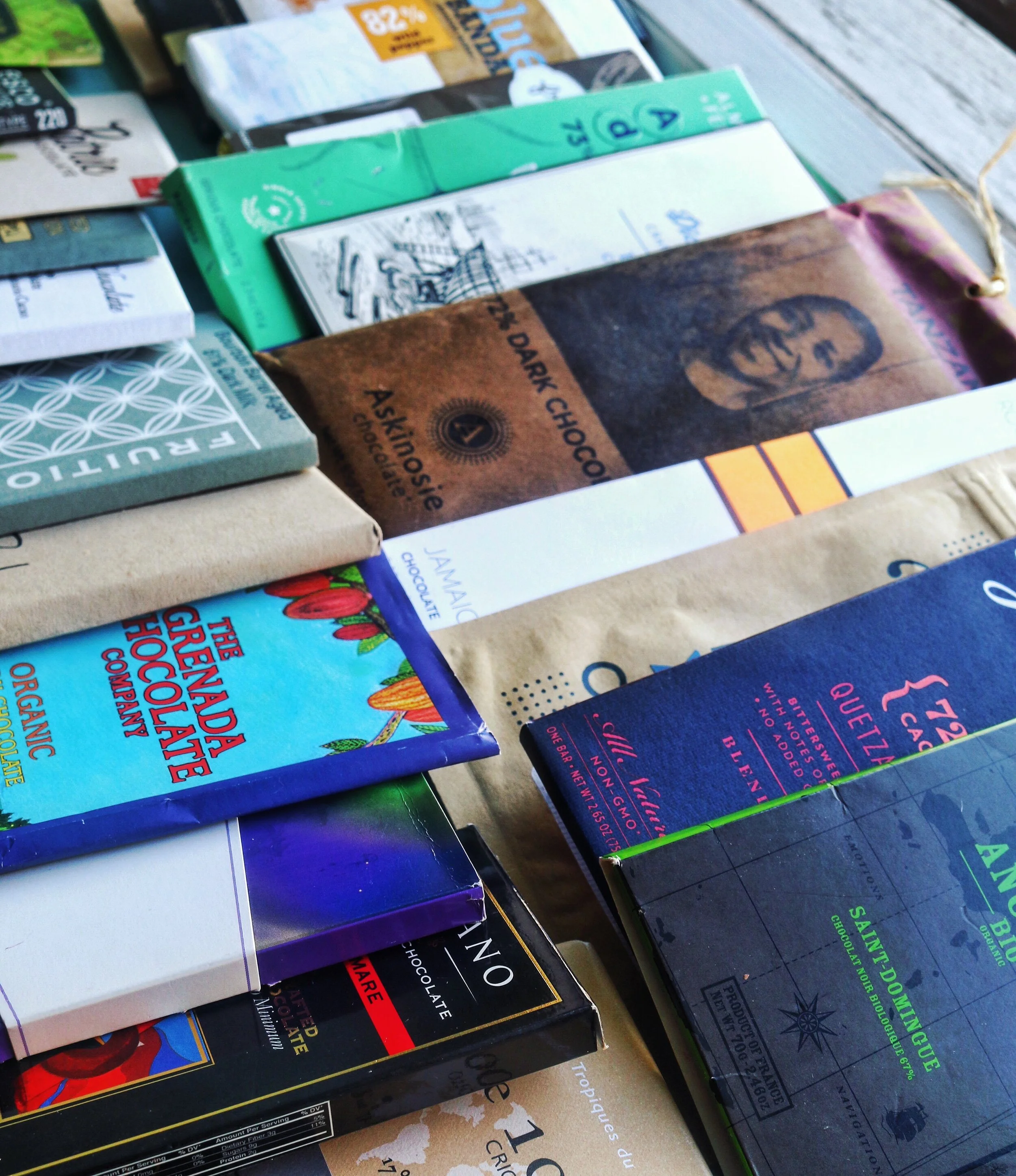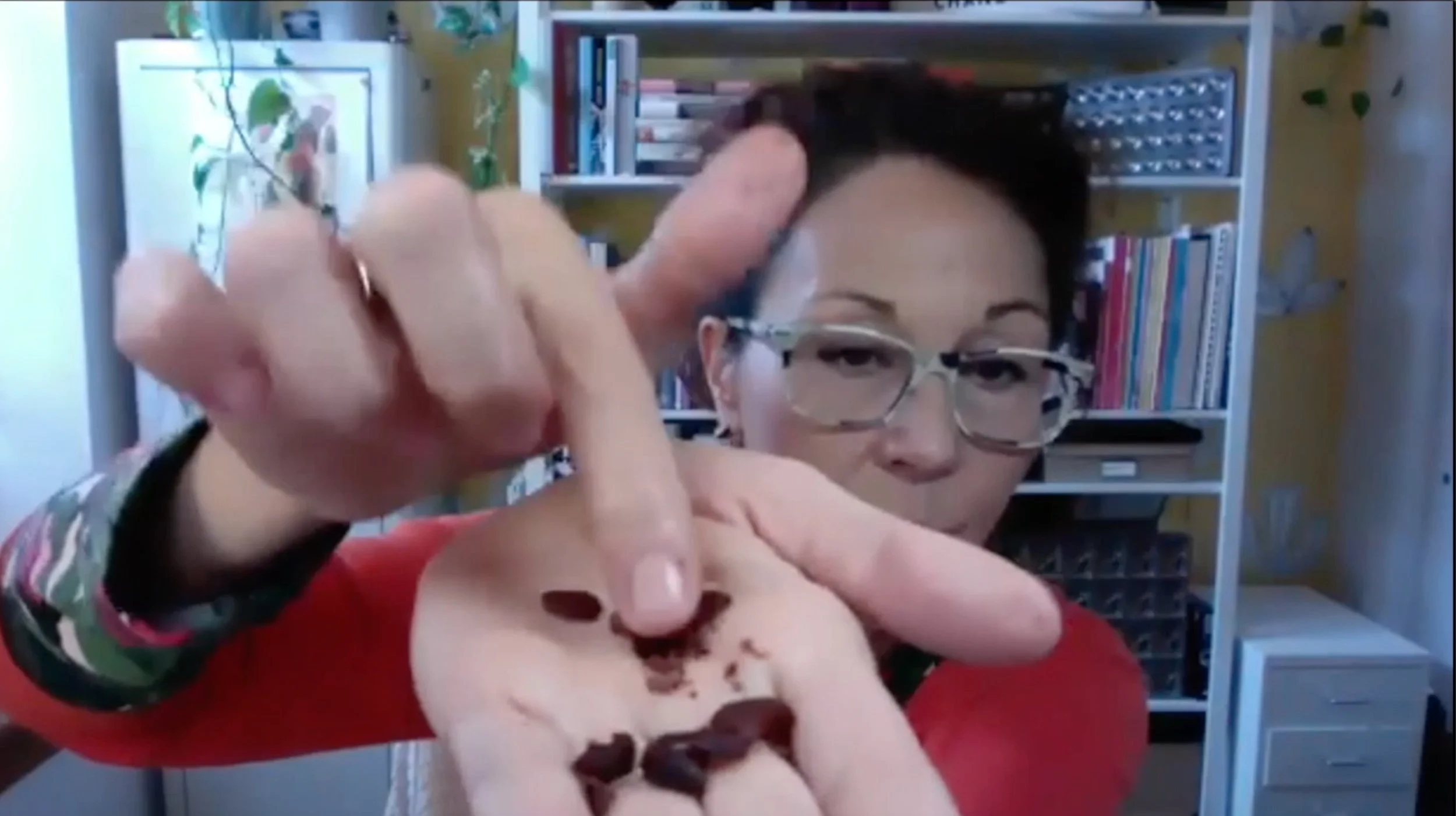About Chocolate Noise
Our team-building chocolate tasting events are a love letter to our favorite thing in the world: bean-to-bar chocolate. Founded in 2015 by food writer Megan Giller, we curate craft chocolate from our favorite makers around the globe and bring it to your colleagues in a one-of-a-kind, delicious experience unlike any team bonding experience you’ve encountered.
At our events, guests learn everything from how to taste artisanal chocolate like an expert to how transparent trade works to how to pair fine chocolate with fine wine. Our chocolate sommeliers have over 30 years’ collective experience in the chocolate world, studying the cocoa supply chain, working at some of the best artisanal chocolate companies in the world, and judging bean-to-bar chocolate competitions. We work closely with the craft chocolate community in the U.S. and in cacao-growing regions, contributing to social justice projects across the world.
Our tastings and work have been featured in The New York Times and Seth Godin’s Blog, and on Discovery Plus.
Why taste with Chocolate Noise?
Our tastings are for everyone. We create interactive and engaging virtual experiences that can accommodate groups of all sizes.
We’re obsessed. Our chocolate sommeliers have a combined 30 years’ experience in the chocolate world. We don’t just taste chocolate; we source it, study its complex supply chain, and judge it in international competitions. We’ll tell you the full story of chocolate —even the parts that big chocolate manufacturers don’t like to talk about.
We go to the source. Chocolate Noise builds relationships with innovative chocolate makers in countries where cacao is grown. Taste the delicious future of chocolate made by the people who know it best!
We’re working to improve our industry. All of the chocolates we feature are ethically made. Through partnerships and direct financial contributions, we support historically disenfranchised chocolate makers and growing regions around the world.
We make it easy. Let us handle the logistics and chocolate shipping. You just need to show up ready to taste!
About Bean-to-Bar Chocolate
You've probably never thought about how that chocolate bar got to be, well, a chocolate bar, but it's actually a pretty involved process. Most companies buy chocolate in bulk and melt it down into individual bars. But recently a new kind of artisan maker has started buying cacao beans directly from farmers. Our founder Megan Giller specializes in this type of chocolate, and we believe it’s more delicious, more equitable, and more exciting than any other type of chocolate out there. It will change the way you think about and taste chocolate. Here’s a bit more about the bean-to-bar-making process:
Roast. Chocolate makers use everything from conventional kitchen ovens to refurbished coffee roasters, and the temperature and time aren't standard at all. How do you know when a bean is fully roasted? You smell brownies.
Crack. After roasting, each cacao bean needs to be cracked to reveal the cacao nibs inside. The cacao nibs are what will eventually become chocolate.
Sort. The cracked cacao beans need to be sorted into nibs and inedible shell. Then the shell will be turned into compost or thrown away. This is done by hand or with a machine with vibrating screens.
Winnow. This process refines the sorting process by getting rid of every part of the shell. If you're really DIY, you'll use a hair dryer to blow away the light shells.
Grind. The cacao nibs and sugar are ground into tiny, tiny particles so that the resulting cacao "liquor" is smooth and silky.
Conch. Some makers take grinding an extra step and use machines to smooth the chocolate out even more, called "conching."
Temper. The final chocolate must be heated and cooled to the correct temperature so that Form V crystals form, which means it will have a nice snap and sheen and won't melt in your hand (sorry, M&Ms). After this process, the chocolate is shelf stable and ready to be eaten!
The last step is to taste it! Let our chocolate sommeliers lead you through a guided tasting of the world’s best chocolate!


